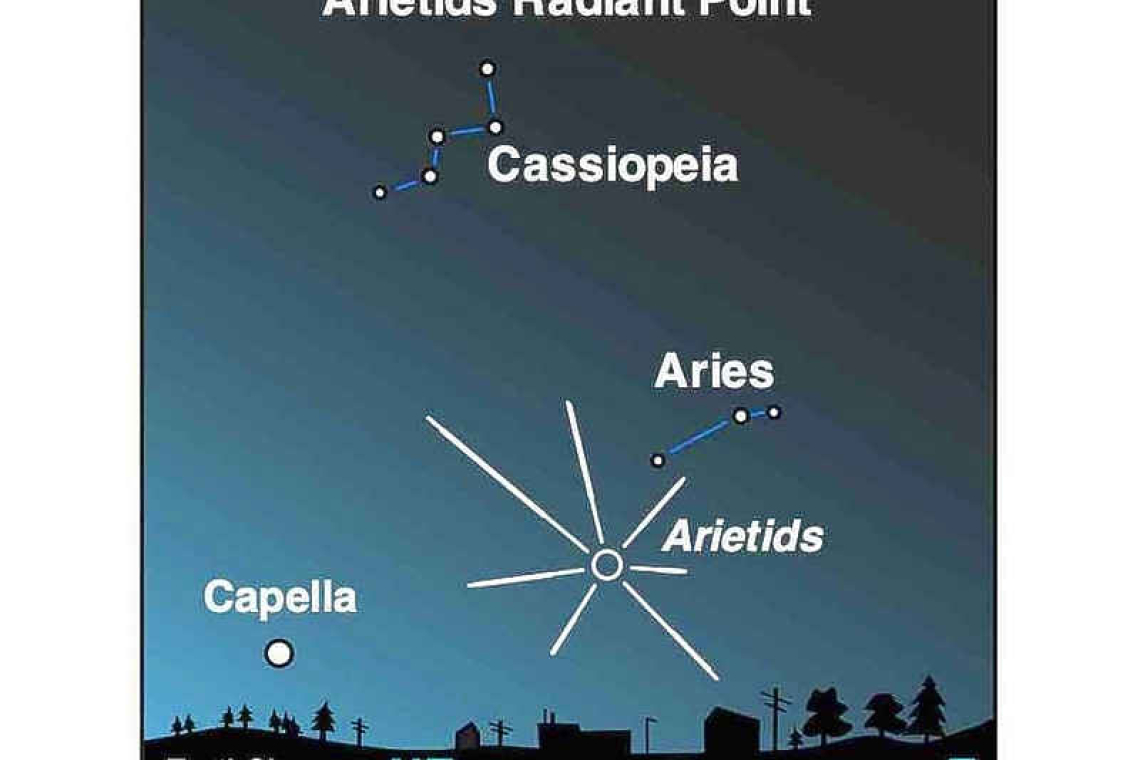~ St. Maarten’s Backyard Astronomy for May 26 - 28, 2023 ~
Sun rises at 5:36am
Sun sets at 6:42pm
Lunar phase: 1st Quarter, waxing crescent
Moon sets at 12:32am
Moon rises at 12:15pm
This weekend the night sky is going to offer a lot for star gazers. First of all, the moon will be half lit as it ends its first quarter. You’ll find it overhead at sunset and as the sky darkens you may take note of the stars around the moon: it’s the constellation Leo the Lion. Leo will head down to the western horizon throughout the evening hours, setting about 1:00am. Leo is recognised by the large head of hair, his mane, that, in stars, resembles a backwards question mark – all atop his compact rectangular body. Leo lies between Virgo and Gemini on the celestial stage, outside of the Winter Circle.
Speaking of our friends in the Winter Circle, where are they? Sirus, the Big Dog, is barely up at sunset and sets soon after. Orion is below the western horizon even before sunset allows for star viewing. Suffice it to say, Winter is officially gone and so have the winter constellations.
The planets this weekend are always fun to locate and then view with binoculars. Venus is currently in Gemini, taking on the role of the Evening Star, and how very brilliant she is! Venus is, in fact, the brightest star-like object in our entire sky. The only objects brighter are the sun and the moon! Mars can be found between Venus and the Moon this weekend in the constellation of Cancer. Then there is Saturn, the ringed planet, currently located in the constellation Aquarius. Saturn this weekend will rise in the east about 1:00am. Jupiter is currently playing the role of the Morning Star, rising about 3:30am this weekend and quickly followed by Mercury and Uranus. The latter two, of course, are faint and almost imperceptible.
This weekend also marks the beginning of the Arietid Meteor shower. The predicted peak for this zone of shooting stars isn’t until June 7, but that isn’t the only reason the Arietids are not taking up too much space here, they mostly fall during the daylight hours, making them impossible to see. Alas! You might see a few in the early morning hours, but they are mostly detected by radio telescopes. They appear to emanate out of the constellation of Aries, thus the name.
Thank you for keeping up with the Night Sky articles, backyard astronomy designed for St. Maarten sky viewing. FYI: If you are out later on in the week, note that each star rises about four minutes earlier each day than written here, and the moon rises 50 minutes later. Night Sky is researched and compiled by Lisa Davis-Burnett. Earthsky.org is a key resource for information and images. Questions or comments? Email This email address is being protected from spambots. You need JavaScript enabled to view it.







